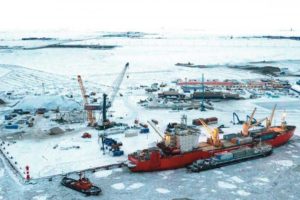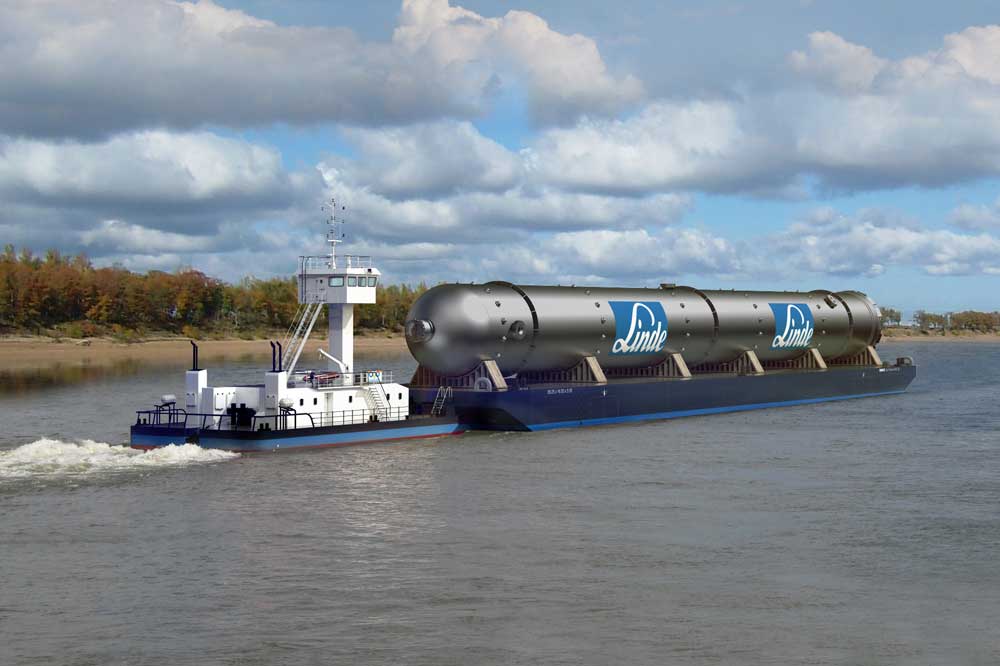Russia’s inland waterways freight volume grew substantially in 2016-17. However, the improvement highlights the urgent need for fleet renewal and facility upgrade in a network extending along 102,000 km.
Latest liquid cargo figures for V. F. Tanker cover the 2016 April-November [ds_preview]navigational season, when the 2.5 mill. tons were carried via the Russian Unified Deep Water System – some 21% ahead of 2015. While dry bulk volumes carried by fellow UCL Holding entity Volga Shipping Company fell 7% to 5.2 mill. tons, exports increased by 7% to reach 3.5 mill. tons, official sources say. More recently, the Asov-Don Basin Administration reported to industry sources that the key 700 km stretch of water carried 4.89m cargo tonnes as freight in the year to August 1, 2017, 4.2% up on 2016. Meanwhile, North-Western Shipping Company – Russia’s largest inland vessel operator with 57 sea and river-sea vessels – reported volumes up by 5% during the first half to reach 2.76 mill. tons.
NEVA focusses on modernization
Against a challenging economic backdrop, these figures are clear positives, although Russia’s 130 river ports account for less than 2% of all cargo carried, despite the abundance of cargoes that lend themselves to transport by water. In fact, the modest growth puts a strain on the vast waterway network, whose need for comprehensive fleet renewal and facility upgrade is fully recognised in the Government’s ‘Strategy of Development of Inland Water Transport to 2030’, published last year. The document suggests that 13,500 new vessels will be needed in the years ahead, including 490 combined river-sea vessels, and envisages construction of new locks, waterway expansion and deepening for full load clearance.
Infrastructure projects include the construction of a second entrance for the Nizhne-Svirsky lock, a new lock at Bagaevsky on Don River and another for Nizhny Novgorod. Further evidence of the growing priority being given to inland waterway transport comes at September’s NEVA 2017 in St Petersburg, where Ministry of Transport support includes a coordinating role for VA Olersky, Deputy Minister of Transport and Head of the Federal Agency of Sea and River Transport. NEVA will also stage a panel discussion to »…explore the solutions to raise investment activities in the Russian water-transport industry« September 21 led by Gazprombank Leasing – a willing backer of barge-building projects in the past, notably the 10-vessel lease deal in 2013 funding orders for Krasnoye Sormovo Shipyard.
Barge transports from Sabetta

In the meantime, prospects for greater exploitation of the inland waterway network continue to emerge. This year, for example, departures from Russia’s Arctic port of Sabetta include 30 barges taking the 2000 km voyage up the Ob and Irtysh rivers, before delivery to the Sibur oil refinery in the Ural city of Tobolsk. That number compares to 11 vessel loads in 2016. Elsewhere, specialist shipping company Combi Lift recently secured a contract from Linde Group to transport 176,000 tonnes of cargo for Gazprom’s massive Amur Gas Processing Plant Project in Russia’s Far East between 2018-2022, including 12 x 900 tonne columns. The deal triggered a 19-vessel newbuilding contract for Damen Group covering four Amur River tugs, four Zeya River shallow-draft tugs, seven barges and four side floaters.

















